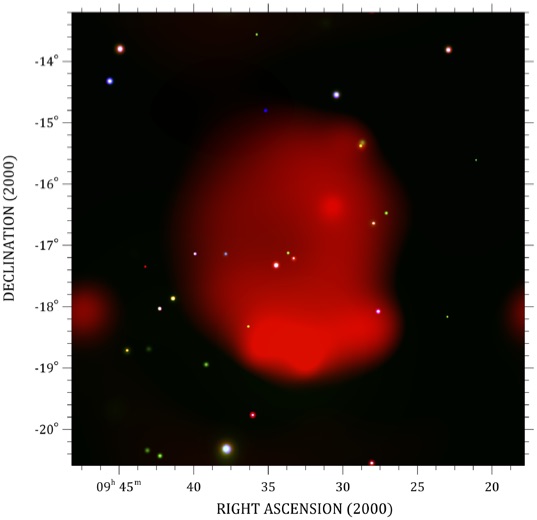eROSITA space telescope was built to provide the deepest map of the hot, energetic universe viewed in the x-ray. To date, the mission has detected more than a million objects, which doubles the number of objects discovered in the history of x-ray astronomy. Australian astronomers have been involved in identification of these objects revealing the nature of the hot universe closing off the 2020/21 period with a successful workshop and a variety of scientific discoveries. Finding a new supernova remnant and the first direct detection of an intergalactic filament 50 million light-years long – these and other scientific highlights round out an impressive year for the relatively new x-ray space telescope.
eROSITA (extended Roentgen Survey with an Imaging Telescope Array) is an instrument built for a Russian-German collaboration, launched on the Russian Spekt-RG spacecraft on July 13, 2019. Since successfully performing its first all-sky survey in June 2020, eROSITA produced images that are already 4 times deeper than the previous all-sky survey by the ROSAT telescope 30 years ago. Australian astronomers collaborate with the German eROSITA Consortium (eROSITA_DE) under the Memorandum of Understanding (MoU) by sharing data, models, algorithms, and simulations from eROSITA and Australia’s astronomical facilities.
Unravelling the cosmic web – observations of the Abell 3391/3395 cluster system
Using the eROSITA x-ray telecope, in partnership with the Australian Square Kilometre Array Pathfinder (ASKAP) radio telescope, an Australian and German collaboration has made the first direct detection of an intergalactic filament – one that is 50 million light years in length. These filaments had previously been modelled as ‘roads’ of thin gas connecting clusters of galaxies but had (until recently) eluded direct detection. Involving Australian scientists from CSIRO and from Curtin, Macquarie, Monash and Western Sydney universities, the international collaboration with German scientists observed the interacting galaxy cluster system of Abell 3391/3395, where they used eROSITA and ASKAP to map a filament encasing the two clusters. Modelling of the early universe suggests that all known galaxies first formed in these hot, gaseous threads, sliding along them to clump together into clusters where the filaments meet. Thanks to the eROSITA collaboration, there is now confirmation for this modelling of a ‘cosmic web’ – and future observations are hoped to uncover more of these intergalactic roads connecting galaxies. See the published paper in Astronomy & Astrophysics.


